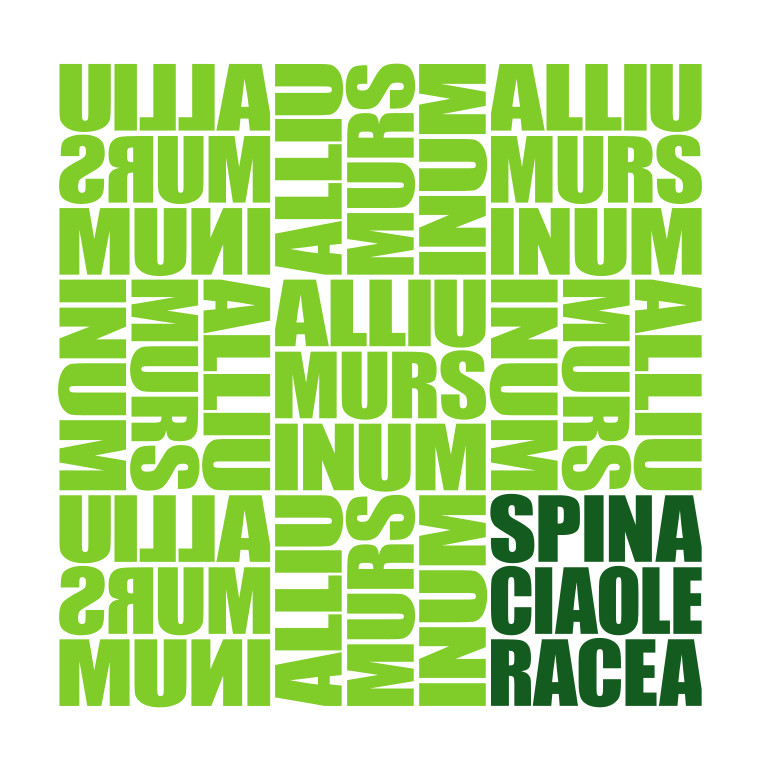Spinacia oleracea (spinach)
Chenopodiaceae (amaranth family)
Annual to biennial herbaceous plant, 30–50 cm high, with petiolate oblong to triangular leaves and inconspicuous, clustered flowers. Cultivated plant, usually grown as a winter vegetable, as a frost-hardy species cultivation possible even at higher altitudes. Dispersal by humans.
Nutrient and vitamin-rich vegetable plant with a favorable effect on digestion, the plant however does not possess the much-mentioned high iron content.
No longer known as a wild plant. Originally from the Indian-Persian region, known in the Mediterranean only since the end of antiquity. Arabs brought it to Europe, and possibly also brought back by crusaders. First mentioned in German literature by Albertus Magnus (1193–1280).
Allium ursinum (wild garlic)
Alliaceae (garlic family)
Perennial herbaceous plant, 15–30 cm high, with lanceolate leaves and numerous small star-shaped, umbellulate white flowers. Bulb geophyte with pronounced garlic odor; spring green, turning yellow already in early summer. Dispersal by water, ants and humans.
Grows wild in deciduous forests on nutrient-rich, moist soils. Medicinal and crop plant, popular as an addition to salads, soups and pesto.
Indigenous in southern Germany, the original area covers large parts of Europe and extends as far as Asia Minor and Central Asia.
